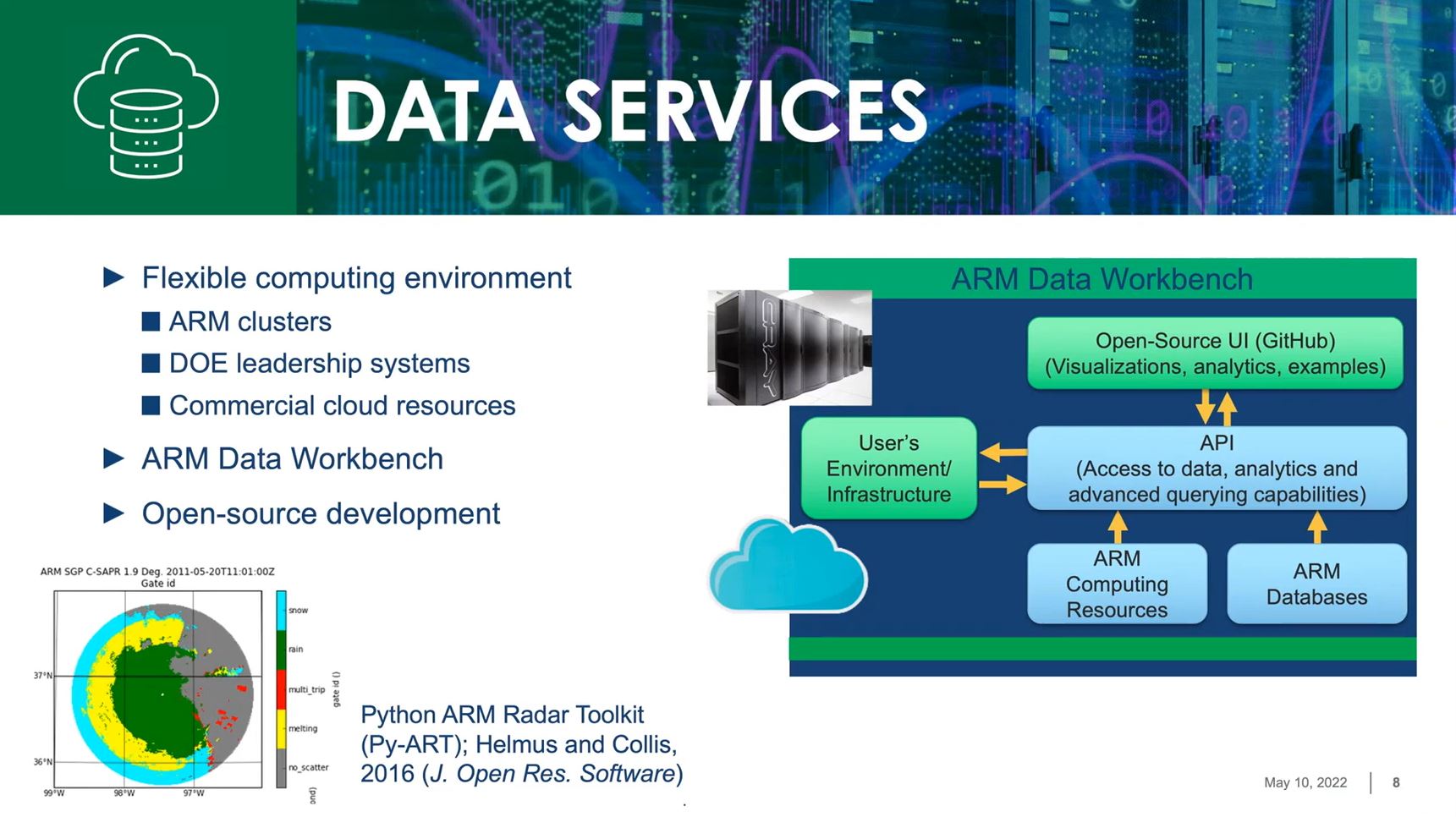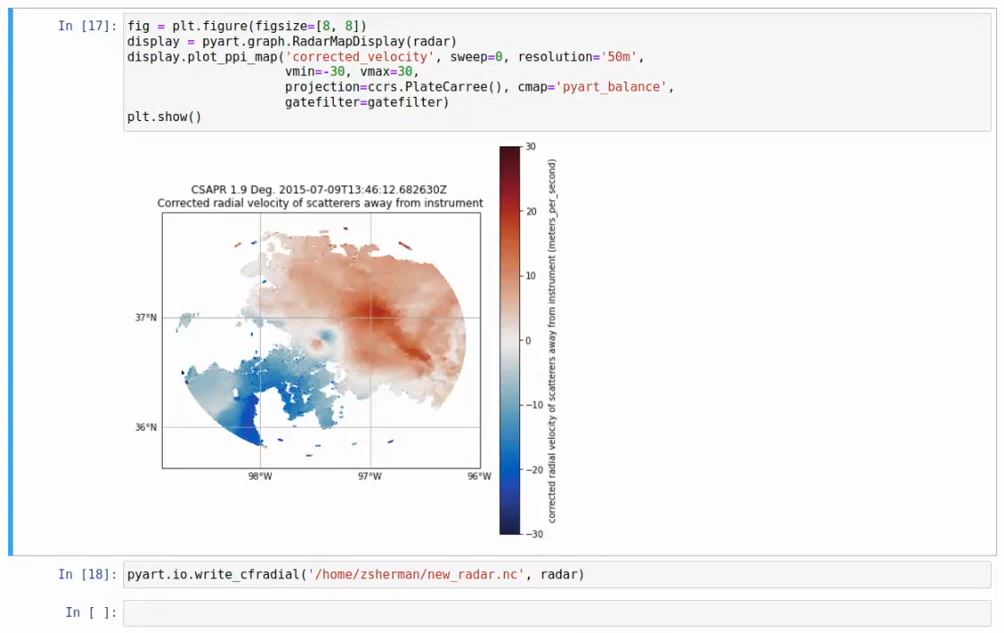ARM/ASR Open Science Workshop Draws an Engaged Audience
Published: 22 June 2022
Virtual sessions over 4 days provide opportunities for discussion and learning
The virtual world has opened the scientific community to new ways of research, connection, collaboration, and innovation. Science no longer is limited to work on a closed computer terminal or within laboratory walls.

With support from the U.S. Department of Energy (DOE), the Atmospheric Radiation Measurement (ARM) user facility and Atmospheric System Research (ASR) program seek to make scientific research, data, and software more open and accessible.
The ARM/ASR Open Science Virtual Workshop 2022, held from May 10 to 13, provided a forum for discussion and discovery of open-science efforts within the atmospheric research community.
The workshop brought together people from DOE national laboratories, federal agencies, academia, and industry. ARM Instrument Operations Manager Adam Theisen, the workshop’s lead organizer, reported that 128 people attended at least one day.
There were 15 talks and 10 tutorials, all focused on aspects of open science related to the missions of ARM and ASR. (View the agenda.)
Federal Entities Embrace Open Science
On the first day, ARM Technical Director Jim Mather spoke about the connection of open science to ARM’s Decadal Vision. This document describes ARM’s plans for addressing increasingly complex scientific challenges over the next five to 10 years.
ARM is developing new tools for users to interact with its 3-plus petabytes of data, which are freely available online through Data Discovery.

Users wanting to participate in open science can access computing resources at the ARM Data Center, such as its new high-performance computing cluster. ARM’s JupyterHub system connects multiple users working on a single project.
In addition, ARM supports the sharing of code that will make it easier to work with its data. ARM hosts areas on the GitHub software development platform where ARM staff and users, ASR scientists, and others in the scientific community can download and contribute code. (Learn more in this ARM article.)
“Our hope is that we can work together to move forward the analysis of these data in the most efficient and effective way,” said Mather.
Other federal agencies are also highly interested in open science.
Keynote speaker Chelle Gentemann, a NASA program scientist, introduced workshop attendees to the agency’s Transform to Open Science (TOPS) initiative. As part of TOPS, NASA has earmarked 2023 as the Year of Open Science, a global effort to inspire increased and deeper engagement in open science.
Open-Science Applications

Throughout the workshop, researchers, developers, and engineers shared how they are creating and using open-source software. Examples of such software include toolkits for processing atmospheric and satellite data. ARM supports the Python ARM Radar Toolkit (Py-ART) and the Atmospheric data Community Toolkit (ACT).
The open-science movement has also expanded to hardware. Workshop presenter Aaron Kennedy, an ASR-funded researcher and associate professor at the University of North Dakota, developed a camera to image falling and blowing snow. The camera can also capture other forms of precipitation. On GitHub, Kennedy describes how people can buy parts and build their own version of the camera.
Tutorials allowed attendees to try out open-science computing resources that automatically launched on ARM’s JupyterHub system or on their own computers. Attendees practiced using the Python programming language, the Jupyter Notebook web application, GitHub, ARM Data Discovery, and open-source software packages.
Get Connected
If you could not attend the workshop or would like to rewatch a segment, you can view a playlist of talks and tutorials.
For more information about open-science activities within ARM and ASR, complete this form to join the mailing list.
Keep up with the Atmospheric Observer
Updates on ARM news, events, and opportunities delivered to your inbox
ARM User Profile
ARM welcomes users from all institutions and nations. A free ARM user account is needed to access ARM data.


















